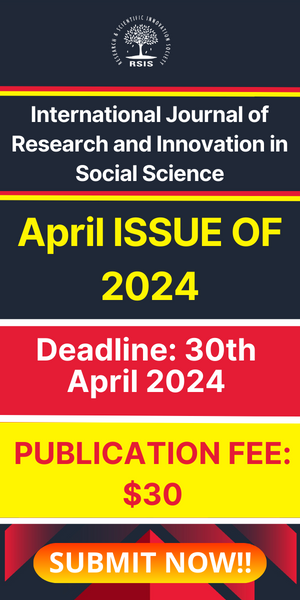Reliability of Three Goniometric Measurement Technique of Active Wrist Flexion and Extension
- June 11, 2019
- Posted by: RSIS
- Category: Physiotherapy
International Journal of Research and Scientific Innovation (IJRSI) | Volume VI, Issue V, May 2019 | ISSN 2321–2705
Reliability of Three Goniometric Measurement Technique of Active Wrist Flexion and Extension
Mansoor.P.P1 BPT; M. Saravana Hari Ganesh2. MPT
1Physiotherapist, MB Hospital, Malappuram, Varangode, Kerala, India
2Associate Professor, SRM College of Physiotherapy, SRM Institute of Science and Technology, Kattakulathur, Kancheepuram, TamilNadu, India
Abstract:-
Introduction: The potential difference in wrist goniometric result may have significant clinical indication, particularly in determining functional active range of motion after stabilizing procedures such as partial wrist fusions, total wrist arthroplasties and ligament reconstructive procedures ate the wrist. So this study tries to examine which of these three active ranges of motion wrist flexion and extension goniometric techniques (ulnar alignment, radial alignment and volar/dorsal alignment) has the greatest intratester and intertester reliability.
Methodology: The study is a non experimental observational study with sample size of 80 subjects convenient sampling is done for subject selection. Total study duration is 3 weeks. The study done at SRM College of Physiotherapy, SRM Institute of Science and Technology, Kattankulathur Subjects with Age 18-30 Years of both male and female were included in the study. All the 80subjects underwent intratester and intertester for active goniometer measurement for wrist flexion and extension by ulnar, radial and volar/dorsal alignment techniques. The researcher was considered to be first tester and the other therapist who takes second goniometric measurements was considered to be second tester.
Result: Radial and volar extension techniques has p value 0.807 (p>0.05) and 0.325 (p>0.05) respectively and ulnar flexion, ulnar extension, radial extension and dorsal flexion has p value 0.008 and 0.003 and 0.000 and 0.001 respectively.
Conclusion: This study concludes that radial flexion and volar extension techniques of wrist goniometric measurements had less intertester reliability than ulnar flexion, ulnar extension, radial extension and dorsal flexion techniques. Dorsal flexion technique has less intratester reliability than ulnar flexion, ulnar extension, radial flexion, radial extension and volar extension techniques of wrist goniometric measurements.
Key Words: Wrist flexion goniometric techniques, Wrist extension goniometric techniques.


